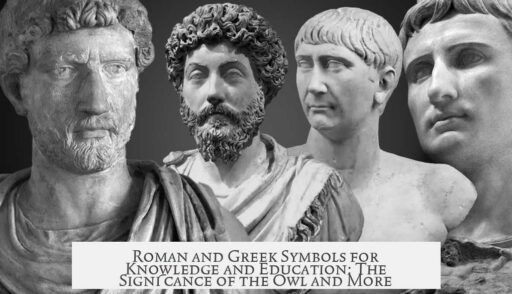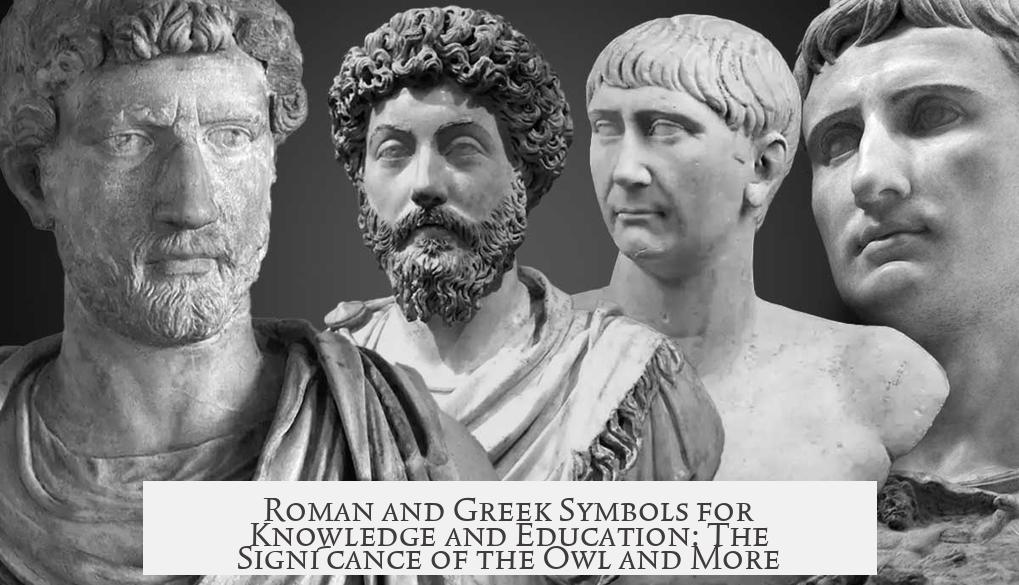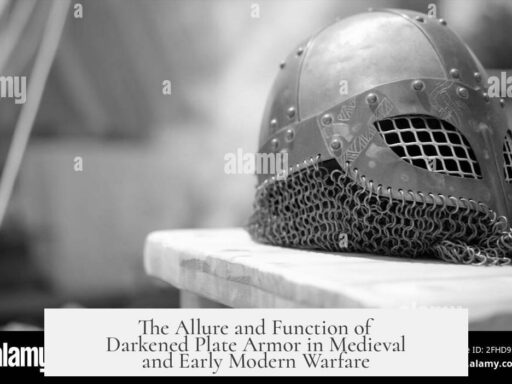Roman and Greek symbols of knowledge and education prominently feature the owl, closely linked to Athena and Minerva, goddesses of wisdom. Athena (Greek) and Minerva (Roman) consistently appear with an owl, symbolizing keen insight and intelligence. This bird remains a powerful emblem of wisdom across cultures, representing knowledge and learning.
The owl’s origin as a symbol of wisdom in ancient Greece has simple roots. It likely stems from practical causes rather than complex mythology. Owls were common in ancient Greece and especially around Athens, Athena’s city. This familiarity made the owl a natural choice for representation on coins, pottery, and artworks connected to the goddess and the city.
Some theories suggest a bird goddess preceded Athena, which may explain the owl’s sacred association. Yet, evidence primarily points to ordinary real-life observation, making the owl a practical and accessible symbol of intelligence for the Greeks and Romans alike.
In education, this symbol serves real value. Schools and classrooms often use the owl as a visual cue linking students to ideas of wisdom, philosophy, and classical learning. The connection also encourages exploration of ancient cultures’ contributions to knowledge.
For younger audiences, linking the owl back to Athena offers a stepping stone for discussions about Greek mythology, civic values, and the origins of Western philosophy. It even provides a fun pop culture link, such as with the “Harry Potter” series, where owls act as messengers and clever companions.
| Symbol | Cultural Link | Meaning |
|---|---|---|
| Owl | Athena (Greek), Minerva (Roman) | Wisdom, Knowledge, Learning |
- The owl represents deep knowledge through its association with goddess Athena/Minerva.
- Its symbolism originated from common presence in Greece and ties to Athens.
- It remains relevant in education to connect students with classical wisdom.
What Are Some Roman and Greek Symbols for Knowledge and/or Education?
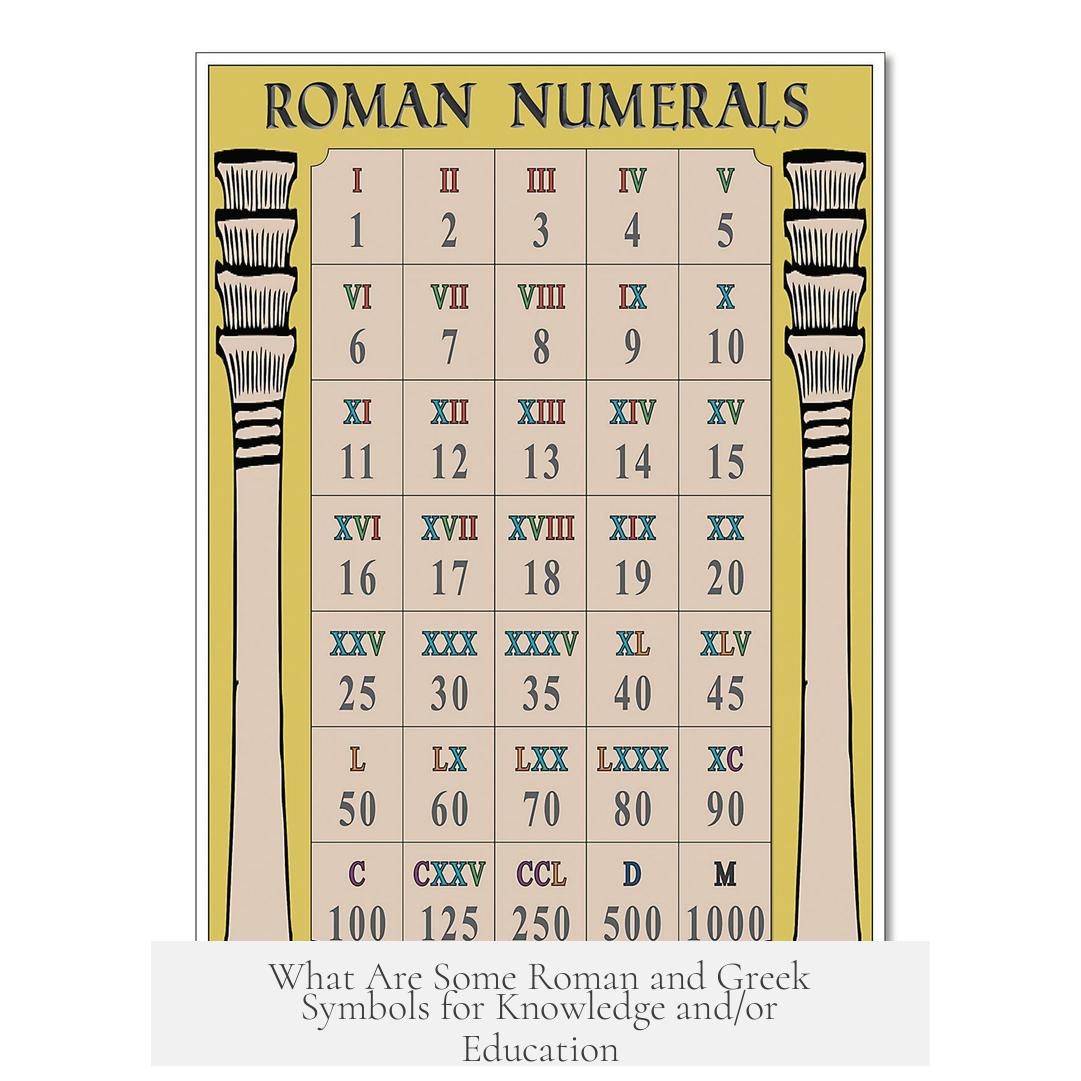
When you think of ancient symbols representing knowledge and education, one clear star shines brightest: the owl. In both Greek and Roman cultures, this feathered creature embodies wisdom and learning. But why the owl? And what other symbols played roles in the ancient worlds of Athens and Rome? Let’s dive into the layers behind these timeless icons.
Imagine a classroom where students gaze at a poster featuring a wise owl perched on an ancient scroll. You nod and say, “Here’s Athena’s owl.” Even if they don’t realize it yet, they’re about to embark on a journey through symbols that defined knowledge for millennia.
The Owl: Wisdom’s Winged Ambassador
The owl’s connection to wisdom comes mainly from its association with Athena, Greece’s goddess of wisdom, courage, and strategy. When the Romans came along, they borrowed heavily from Greek mythology, renaming Athena as Minerva, but keeping her owl companion intact.
This simple bird, with its penetrating eyes and nocturnal vigilance, symbolizes deep, patient understanding. Athena and Minerva, seen in helmets and armor, might seem fierce but carry profound intellectual authority, inspiring scholars and strategists alike.
Even in today’s world, the wise owl remains a trusty emblem. You’ll find it decorating university logos, libraries, and educational materials. The image sticks because it evokes ancient roots and a quiet sense of knowing.
Why an Owl? The Not-So-Mythical Origins
If you’re expecting a thrilling origin story about how the owl gained its wisdom badge, prepare for a surprising lack of drama. The connection is pretty straightforward, maybe even mundane.
One theory suggests a predecessor bird-goddess linked to Athena. Another, more probable reason is the owl’s prevalence in the Athens region. Owls frequently appeared on pottery, coins, and official insignia, partly because the city of Athens bore its name from the goddess. So, the owl became a city symbol — naturally morphing into a symbol of knowledge.
This practicality doesn’t diminish its usefulness in education. On the contrary, it makes it more relatable. The owl isn’t a fantasy symbol plucked from myth alone; it grew organically from daily life and cultural identity. That’s pretty cool.
Using Owl Symbolism in Education: Tips for Teachers and Enthusiasts
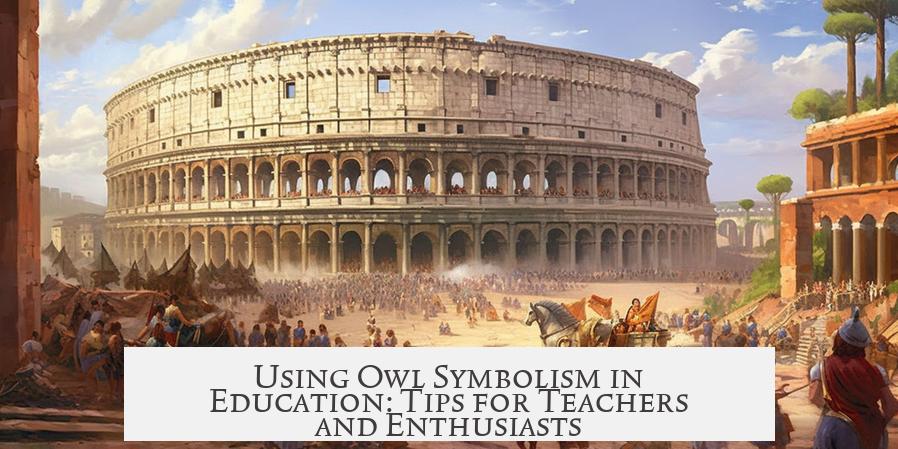
Teachers looking for a symbol to anchor lessons on ancient knowledge will find the owl perfect. It carries layers of meaning but remains simple enough to grasp.
You can start by tracing the owl’s journey from ancient Greece and Rome to the modern classroom. This sparks curiosity. Linking it to broader themes like philosophy, democracy, or art deepens understanding.
Want to make things even more engaging? Toss in a Harry Potter reference. Owls in the wizarding world deliver messages, much like how owls in mythology deliver wisdom. Kids may giggle, then ask more questions, giving you a chance to connect mythology with literature.
Other Symbols for Knowledge and Education in Ancient Rome and Greece
The owl isn’t the only symbol ancient cultures used to express education or wisdom. For example, the laurel wreath was often associated with achievement and intellect. Poets, scholars, and victorious citizens proudly wore it.
The olive tree, sacred to Athena, offered another quiet but lasting symbol. It stood not just for peace but also for prosperity and thoughtful growth — essential pillars of education.
Scrolls and tablets represented the physical tools of learning. In Roman times, wax tablets and papyrus scrolls were the classroom “tech.” They symbolize the transmission of knowledge from teacher to student.
Why Do These Symbols Matter Today?
Symbols like the owl, the laurel wreath, or even the olive branch are more than artistic decoration. They offer a bridge connecting modern learners to ancient wisdom.
When classrooms adapt these symbols, they create a narrative. Students feel the weight of history behind their studies—an invitation to join an age-old conversation. It’s both humbling and motivating.
Moreover, understanding these symbols enriches cultural awareness. It reminds us how knowledge was cherished and preserved through centuries, often via simple images.
Wrapping It Up: Ancient Symbols Still Teach Us
Roman and Greek societies chose symbols like the owl to express complex ideas about knowledge and education. While the owl might have humble origins, its impact is anything but small.
These symbols endure because they speak to something universal — the human quest to learn, understand, and grow. When we weave these ancient emblems into modern education, we call on the wisdom of generations past to inspire the thinkers of tomorrow.
So next time you spot an owl decorating a book cover or school emblem, remember: you’re looking at a symbol with roots that dig deep into the gardens of ancient Athens and Rome. It’s not just a bird; it’s a flying beacon of wisdom.
What other ancient symbols do you think could spice up a classroom? Can you imagine how using them shapes a kid’s view of knowledge? Feel free to share your thoughts!
What does the owl symbolize in Roman and Greek culture related to knowledge?
The owl is linked to Athena and Minerva, goddesses of wisdom in Greek and Roman myth. It represents knowledge and wisdom.
Why was the owl chosen as the symbol for Athena and Minerva?
There is no clear reason. Owls were common in Greece and appeared on coins and pottery. A bird goddess before Athena might have influenced this.
How can the owl symbol be used in teaching about knowledge and education?
The owl helps connect lessons to Athena, wisdom, philosophy, and Greece. It can engage students by linking ancient symbols to modern ideas.
Are there other symbols besides the owl for knowledge in Greek and Roman culture?
The content focuses mainly on the owl. Other symbols are less emphasized but Athena and Minerva themselves symbolize wisdom.
Is the owl symbol still relevant today for representing wisdom?
Yes, the owl is commonly used to represent knowledge and wisdom even now, bridging ancient themes with contemporary culture.
